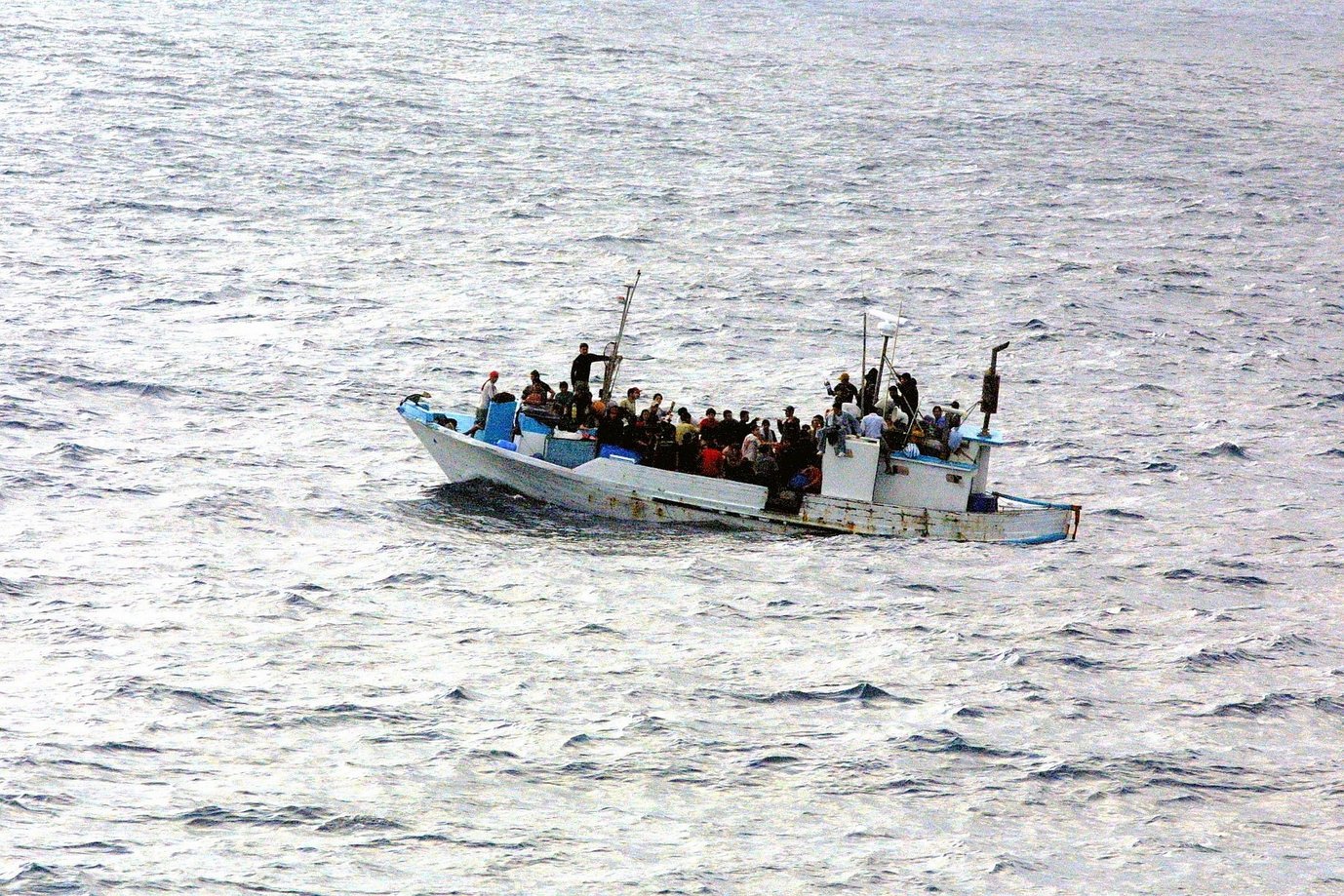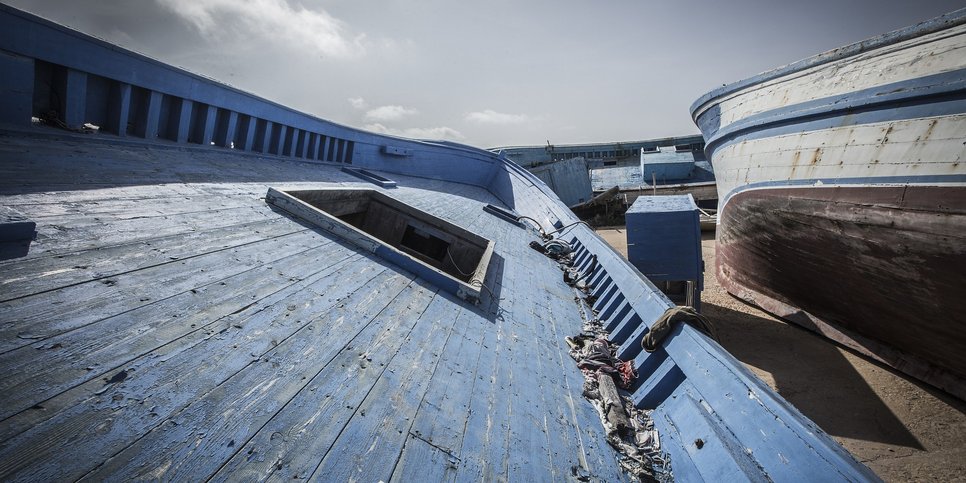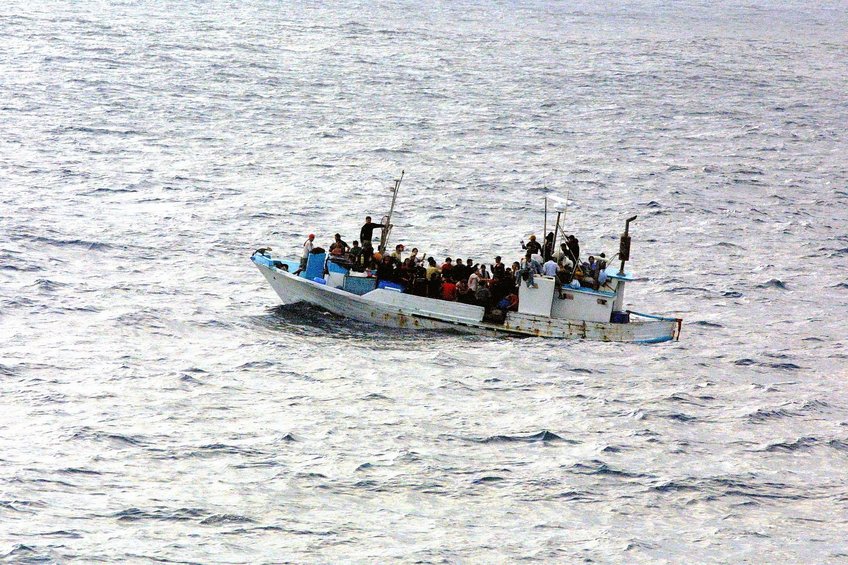Criminological analysis of the Commission Guidance on the implementation of the Facilitators Package in the EU Pact on Migration and Asylum of 2020: Between legal perspectives and empirical realities

This post was also published as a part of a special issue of the Cahiers de l’EDEM, which was edited by Sylvie Sarolea, Zoé Crine, Eleonora Frasca, and Francesca Raimondo.
Over time, various approaches to the criminalization of people helping irregular migrants, the so-called “solidarity crimes”, have been put forward. Different terms are used by researchers to cover a multitude of criminalized behaviours and the repressive measures that are utilized to achieve this. Some authors no longer write about criminalization or solidarity (a blurred and politized concept) but rather about “policing humanitarianism” (Carrera et al., 2019). The instruments of this policing are not limited to court cases and criminal sanctions. Rather, they encompass a range of social reactions including delegitimization, intimidation, and disciplinary and administrative sanctions. The framework for analysis includes traditional practices of punishment (through criminal law) and measures of social control aimed at preventing the “pull factors” that are deemed to encourage irregular migration. So far, researchers who have studied the policing of humanitarianism focus on the instrumentalization of the law and the discretionary power of authorities. They do not look at the actors who are being criminalized and the ways in which they shape border policies at the local level. However, in contrast, in social science research, ethnographic approaches are used to explore the role of citizens who are mobilizing in order to help “migrants on the move” (Vergnano, 2021, p. 1). Sociologists are studying the emergence of “informal solidarity” and are profiling the activists concerned. These activists are “unfamiliar with the official reception system in which institutional funding confines service organizations to a role of verification and functional filtering in the border regime” (Giliberti and Queirolo Palmas, 2020, p. 111). We maintain that the principles of “neutrality, impartiality and independence of humanitarian action” (covered by the European Consensus on Humanitarian Aid) takes insufficient consideration of the practical, empirical realities. This element is important to understand because “when citizens’ actions are between humanitarian spirit and political activism, they are criminalized, and ultimately engage in civil disobedience” (Giliberti, 2018, p. 153, translated).
While perspectives are diversifying in order to grasp the different dimensions of criminalization, an increase in the volume of research can be observed since 2015. Within the EU-funded studies, the main resources available are commissioned by the European Parliament’s Department for Civil Rights and Constitutional Affairs (EU Parliament, 2018), the Research Social Platform on Migration and Asylum (Resoma, 2019), and the Fundamental Rights Agency of the European Union (FRA, 2019). They identify several cases of criminalization and describe the legal and political discussions at stake, using different methods of data collection: 1) the EU Parliament report is based on a media monitoring compilation, which covers a two-year period of “actual and indirect criminalization of humanitarian assistance” in 10 Member States. It is categorized according to the modalities of policing (from suspicion to formal prosecution). There are 92 articles in total. It provides evidence of “the scale of criminalization of humanitarian assistance as a trend across the EU” (EU Parliament, 2018, p. 125); 2) Lina Vosyliute (CEPS) and Carmine Conte (MPG) collected data on formal prosecutions and investigations carried out by national judicial authorities under anti-smuggling laws, so on the grounds “falling under the material scope of the Facilitation Directive” (Resoma, 2019, p. 19). They identified at least 49 cases in 11 Member States, concerning 158 individuals between 2015 and 2019, including 16 Non-Governmental Organizations (NGOs) and associations affected by the “formal criminalization of their volunteers” (Resoma, 2019, pp. 24-25). The criminal offences used for prosecution and the number of convictions have been outlined for each country; 3) More specifically, FRA maps the intervention of civil society-deployed rescue vessels in the Mediterranean. Data on NGOs involved in legal proceedings against them have been published by the EU agency since 2018. It determines the different modalities of policing which target these specific actors, including the difficulties they face in disembarking migrants in safe ports.
Researchers who wish to “communicate directly with policy makers by providing ready-to-use evidence on policy, policy perceptions and policy options on migration, asylum and integration gathered among researchers, stakeholders and practitioners” (Resoma, 2019, p. 52) try to measure the extent of the phenomenon and to quantify it. At the institutional level, the Commission took a position on “the criminalization of acts carried out for humanitarian purposes” when they adopted the guidance on the implementation of European Union (EU) rules on definition and prevention of the facilitation of unauthorized entry, transit and residence 2020/C323/01. Based on the report from Resoma and data collected by Eurostat, it recognizes that the criminalization of humanitarian acts has increased, demonstrated by the fact that there have been 60 cases of prosecutions and investigations related to the offence of facilitation between 2015 and 2019 (Commission, 2020, p. 2). The Commission communication relies on the evaluation of the Facilitators Package under the REFIT program (2017) and the European Parliament resolution on guidelines for Member States to prevent the criminalization of humanitarian aid (2018). It also draws on key reports by the think tanks mentioned above. The Commission’s position is that they invite Member States to incorporate humanitarian exceptions in their legal frameworks, however they don’t go further by mandating this. Therefore, this paper will introduce a criminological reading of the Commission’s guidance in order to highlight the complexity of the phenomenon, the gap between the empirical and legal realities and the interest in a multidisciplinary approach. It will be structured as follows: first, the current criticisms of the definition and prevention of the facilitation of unauthorized entry, transit and residence from a legal perspective; second, a criminological analysis of the Commission Guidance; and finally, some proposals for further discussion.
Current criticisms of the definition and prevention of the facilitation of unauthorized entry, transit, and residence from a legal perspective
Criminalizing acts related to helping migrants is made possible due to the vagueness of the EU legal framework on migrant smuggling in a context of increased focus on the fight against irregular migration. The so-called “Facilitators Package” based on the Directive 2002/90/EC and the Framework Decision 2002/946/JHA is criticized as the legal framework gives wide discretion to Member States to define migrant smuggling. There is no requirement of financial or other material benefit for helping unauthorized entry and transit, and no obligation to exempt humanitarian assistance for facilitating unauthorized entry, transit and stay. One of the main criticisms is about the EU’s definition which is not in line with the UN Protocol against Migrant Smuggling and its purposes. It allows the criminalization of service providers, smuggled migrants and their relatives who act out of compassion, while the Article 6(1) of the UN Protocol states that “Each State Party shall adopt such legislative and other measures as may be necessary to establish as criminal offences, when committed intentionally and in order to obtain, directly or indirectly, a financial or other material benefit”. So far, there are policy recommendations addressed to the EU to improve the legal framework, determining what should be investigated and prosecuted, how it should be monitored and assessed, even sanctioned, and what could be the alternatives to prevent migrant smuggling (EU Parliament, 2018, p. 106).
Moreover, the offence of “facilitating illegal entry, transit and stay” has been provided for by law in most of Members States before the Facilitators Package. In Belgium, for example, Christelle Macq looks back at the development of this legislation from its origins in 1939 until the present day (Macq, 2021, p. 7). The criminalization would have been perpetuated despite changes in the law and parliamentary debates; despite the humanitarian clause and its interpretation to prevent disinterested aid from being reprehensible. “Finally, facilitating illegal entry and transit is incriminated by European texts, without requiring the pursuit of a profit motive” (Macq, 2021, p. 16, translated). Many criticisms have been directed at the disproportional use of EU resources and the targets of these policies, while the business of organized criminal groups keeps growing (EU Parliament, 2018, p. 109). Ultimately, prosecutors are encouraging to be helpful in their defining of the crimes that the EU needs to focus on. Cooperation between law enforcement, governmental authorities and those who are helping migrants is also strengthened (EU Parliament, 2018, p. 110).
However, the Facilitators Package is not the only legal instrument which leads to criminalization. It also involves the adoption of new rules which target people who assist irregular migrants to restrain their actions. “We are moving from legal proceedings to suspicions and dissuasion policies” (Carrera et al., 2019, p. 182). The measures taken against the NGOs involved in Search and Rescue (SAR) activities in the Mediterranean Sea are good examples (Masera, 2019). The “Code of conduct” adopted by the Italian government in 2017 and the preventive seizure of the Iuventa (2017) and Open Arms (2018) show how “the criminalization of a certain phenomenon does not only depend on convictions, but also on the perception that public opinion has of this phenomenon” (Masera, 2019, p. 42, translated). In this hostile environment against irregular migrants and those who help them, judicial and fiscal harassment have been observed, such as exploratory inquiries, limitation of donations to organizations seen as financing migrant smuggling, and defamation campaigns to discredit civil society actors (EU Parliament, 2018, p. 107).
Regarding all the recommendations, there is no modification of the legal framework planned by the Commission in the Pact on Migration and Asylum of 2020, even though they recognize that “guidance on interpreting the Facilitation Directive is needed to provide greater clarity on its scope of application” (Commission, 2020, p. 2). They invite “Member States that have not already done so to use the possibility provided for in Article 1(2), which allows them to distinguish between activities carried out for the purpose of humanitarian assistance and activities that aim to facilitate irregular entry or transit and allows for the exclusion of the former from criminalization” (Commission, 2020, p. 6). On that note, the Commission does not follow the key reports on which its communication is based, which shows the gap between legal and empirical realities. Indeed, if the humanitarian clause exists in national legislation, it can be strictly interpreted by courts. In Belgium, for example, this clause does not exclude anyone who intervenes in a disinterested manner from being prosecuted if the humanitarian reasons are contradicted by other elements (Macq, 2021, p. 124.). “The courts (...) seem to start from the principle that a person could only provide aid from an essentially altruistic perspective if he or she has close ties with the person concerned" (Macq, 2021, p. 126, translated). Therefore, it remains necessary to define, at least, the criteria of material benefit and unjust enrichment and capturing the criminal intent of a migrant smuggler: the intention to profit or abuse migrants.
Finally, it should be recognized that the Commission has a clear position about the criminalization of “humanitarian assistance mandated by law”. The guidance is mostly based on the Article 1 of the Facilitation Directive which must be interpreted as follows: “i) humanitarian assistance that is mandated by law cannot and must not be criminalized; ii) in particular, the criminalization of NGOs or any other non-state actors that carry out search and rescue operations at sea, while complying with the relevant legal framework, amounts to a breach of international law, and therefore is not permitted by EU law; iii) where applicable, assessment of whether an act falls within the concept of ‘humanitarian assistance’ in Article 1(2) of the Directive – a concept that cannot be construed in a manner that would allow an act mandated by law to be criminalized – should be carried out on a case-by-case basis, taking into account all the relevant circumstances” (Commission, 2020, p. 6). The humanitarian assistance mandated by law mainly concerns SAR activities at sea which should be protected by international law, in the context of the events in the Mediterranean widely covered by the media. Therefore it is interesting to extend the scope of this interpretation to other scenarios, such as research and aid activities in dangerous territories, e.g. the mountains and border areas, where helping irregular migrants is seen as an obligation to assist people in destress, thus as both a legal and moral obligation (Del Biaggio, Giannetto, and Noûs, 2020; Vergnano, 2021).
Criminological analysis of the Commission Guidance from an empirical perspective
In its introduction, the Commission recalls that its key political priority is “to disrupt the business model of criminal organizations that put migrants’ lives at risk and threaten our societies’ security, while avoiding risks of criminalizing those who help migrants in distress” (Commission, 2020, p. 1). Therefore, several key findings in the communication allow us to develop a critical analysis regarding empirical realities. A criminological reading is advanced, and two questions will be answered: first, in what way does criminalization occur, outside of the criminal justice system, and second, how are the principals of humanitarian aid undermined when individuals help irregular migrants.
What about criminalization that does not go through the criminal justice system? How to study the range of repressive instruments?
Civil society actors have reported increased criminalization of their activities since the so-called “Refugees’ crisis” (Resoma, 2019, p. 4). These developments cover cases of policing that goes beyond criminal prosecution on the grounds provided for in the Facilitators Package, but still use the argument of combating irregular immigration as their main justification” (EU Parliament, 2018, p. 59). The arsenal of measures with a dissuasive aim is not limited to criminal law. So, a problematic situation emerges regarding how to study the plurality and diversity of these instruments. On that note, three modalities of policing humanitarian activities have been categorized by the authors of “Policing Humanitarianism” (2019). They specify that these modalities can be cumulative and the lines between them become blurred in some cases. This analysis reveals a set of broader policing dynamics, which include preventive and punitive measures (Carrera et al., 2019, p. 174). According to the authors, the three modalities are:
1) Intimidation and suspicion. These practices take the form of harassment and verbal and physical attacks. In public speeches, civil society actors are portrayed as pull factors of “illegal migration”;
2) Disciplining. A range of practices including restricting the conditions for lawful humanitarian activities, limiting venues of dialogue, and limiting access to information regarding the implementation of government policies;
3) Formal criminalization. The use of traditional criminal justice or criminal justice-like approaches to the facilitation of unauthorized entry and residence, including penal sanctioning or other “administrative” sanctions such as fines. (Carrera et al., ibidem).
While this categorization is interesting, the authors point out the difficulty in determining which modality is regarded as an act that may be covered by these three dimensions. It has some methodological limits. Our proposed criminological approach would be to see the modalities through the lens of whether the measures are “preventive or punitive”. Punitive measures from authorities include the closure of occupied empty buildings that accommodate homeless migrants; administrative sanctions for the distribution of food in public spaces; prosecutions against individuals or organizations accused of money laundering and offences against the State security. Preventative measures are those of exhaustion and dissuasion, including media delegitimization (by accusing organizations of being pull factors and complicit in smuggling), some decisions by local authorities to move places of assembly (which makes it more difficult to intervene in giving food and information). In these cases, the objective is not to punish but to prevent both migrants and assistants from being visible in the public space.

The question remains regarding how we can achieve a thorough understanding of the phenomenon if we cannot define and measure the criminalization process through reliable statistics that cover all forms of instruments used for criminalization. The methods used to collect empirical data in social sciences, such as ethnography, partially respond to this difficulty; regardless of the number of cases recorded, the objective is to understand the mechanisms that lead to criminalization and to observe the interactions between authorities and those who face repressive measures, with the aim of rethinking EU border policies (Giliberti, 2018; Giliberti and Queirolo Palmas, 2020; Vergnano, 2021).
What about acts that are politically motivated and not just humanitarian? How to determine whether aid is humanitarian or not?
Three groups of civil society actors who experience more restrictions in their humanitarian aid activities have been identified: “first, those engaging in SAR in the Mediterranean Sea; second, those assisting irregular immigrants and asylum-seekers in accessing fundamental rights and basic services and social support (such as shelter and food); and third, claim-making civil society actors advocating for immigrant and asylum-seeker rights to be upheld and holding states’ policies – and human rights violations – accountable and justiciable” (Carrera et al., 2019, p. 175). Also, research in social sciences shows that there are some anarchist groups who claim "No Border, No Nation", and who make political demands when visiting border areas. These groups have a different relationship with authorities and a divergent concept of society, leading to them being considered “marginal”. This is perhaps where the line between legal and illegal practices becomes narrow. It is their commitment to activism that justifies helping migrants, rather than the migrant’s vulnerable position. This is also a reaction to anti-migrant and xenophobic movements that are on the rise in the EU (Vergnano, 2021). “Hospitality on the borders of legality is therefore presented as a critical position, considered by some as an act of political dissent” (Agier and Le Courant, 2022, p. 864, translated). These political groups are more easily seen as “pull factors” of illegal migration, and they carry the label of “deviants”, making their criminalization easier because they do not fit into the humanitarian framework.
In its guidance, the Commission uses the term “acts carried out for humanitarian purposes” but does not specify what it means. It highlights that the cases analyzed in the EU-funded studies concern mostly “volunteers, human rights defenders, crews of boats (…), but also ordinary members of the public, family members, journalists, mayors and religious leaders” (Commission, 2020, p. 2). Indeed, people who are not members of NGOs (recognized and legitimized by the States), left-wing political groups, community activists or trade unionists, but who could simply be classified as “ordinary citizens”, are also affected by criminalization when they act in a private nature, in spontaneous solidarity and support of migrants (Giliberti and Queirolo Palmas, 2020). “This often leads to a more assertive, even more radical, political position” (Agier and Le Courant, 2022, p. 952, translated). Their mobilization is somehow different from the classic forms of defense of human rights, even though they are providing aid without criminal intent or without an aim to profiting from it. Demonstrably, the line between “humanitarian and political action” is blurred.
Therefore, the humanitarian framework can be criticized “first, because it supposes a dichotomy between ‘helper’ and ‘victim’ that structures our relationships. Second, because humanitarian action focuses on emergencies and crises which require being constantly surprised (…). Looking at issues from a humanitarian perspective leaves no room for historical and political contextualization, nor for the social dynamics that structure these situations over time” (Agier and Le Courant, 2022, p. 728, translated). Moreover, the “humanitarian exception” as perceived and presented by the Commission is restrictive with regards to its application because it does not protect certain categories of individuals from criminalization. We believe that above and beyond providing such exception in the law, it is necessary to spotlight the implementation of “anti-migration reception policies”, since the role played by the actors in this context and their individual motivations influence the criminalization processes.
Conclusion
The Commission’s policy recommendations do not respond to the context of tensions, pressures and fears of unjustified sanctions expressed by organizations and individuals involved in helping irregular migrants. While the European Parliament Resolution 2018/2769 (RSP) called on the Commission to clarify which forms of assistance should not be criminalized, they listed only three forms of facilitating irregular migration: transporting or managing the transportation, fabricating and/or providing fake documents, and arranging marriages of convenience. It is specified that prosecuted activities must be the ones that bring “substantial profits”. However, the guidelines remain vague for interpreting this notion. They call on Member States to distinguish between activities that are carried out for humanitarian purposes to avoid criminal sanctions, but they do not define what they mean by that. Despite the EU-funded studies that advice to improve the definition and prevention of the facilitation of unauthorized entry, transit, and residence, the Commission states that it is the role of national judicial authorities to assess the humanitarian purpose, as well as to balance the interests and values at stake (Commission, 2020, p. 3).
There has been a gap between legal and empirical realities so far. The Commission concludes by inviting Member States to incorporate the humanitarian exception in their legal frameworks. Nevertheless, in countries where this exception in law has already been provided for, cases of criminalization have been recorded. First, these cases go beyond criminal prosecution on the grounds of the Facilitators Package, and the arsenal of instruments used by the authorities is not limited to criminal law. Second, the profile of those helping migrants and their personal motivations influence the criminalization processes. The question remains regarding how the legal perspective could deal with so many different situations and categorize them. For example, which category should be applied when anarchist groups, who subscribe to a radically different model of society, help irregular migrants for political reasons without the intention of making a profit. Political activism also seems to fall between the cracks of the Commission’s categories.
Therefore, we decided to explore all the measures that are used to criminalize those who help migrants, including policies with a dissuasive aim. We make a distinction between (1) criminalization through preventive measures and (2) criminalization through punitive measures. Also, we integrated the individual dimension into the study of the phenomenon, in order to grasp the actors’ reactions to the “deviant label” that is applied to them when they become “pull factors” of irregular migration.
In conclusion, we support the various recommendations that have been made to define the criteria of material benefit and unjust enrichment in the Facilitators Package. It is a first step to identify if the “migrant smuggler” has a criminal intent because helping vulnerable people in irregular situation can be perceived as an essential act of solidarity, a moral obligation, and a political imperative. In these cases, could the concept of “humanitarian assistance mandated by law” be applied broadly, when it comes to upholding fundamental rights or helping a person in distress?

